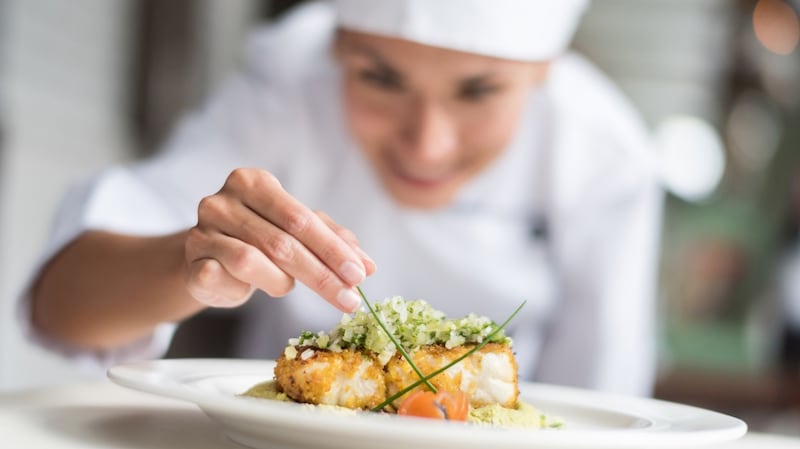Not many people start their working day by making restaurant reservations under an assumed name. Being an inspector for the Michelin guide is a bit like being a radio host: everyone knows what you do but not many people know what you look like – and we'd like to keep it that way. Anonymity is a big part of the job – but not just for our sakes. When we go to a restaurant we want a typical experience and to be treated just like any other customer.
The most fundamental element of this job is, unsurprisingly, eating – and that means lunch and dinner out almost every working day, so fussy eaters need not apply. An inspector’s primary job is twofold: to make sure the restaurants and pubs already in the guide are still recommendable and to search out new establishments to add to the guide. We sometimes eat alone, sometimes in pairs – we always try to vary things up.
If the food is wonderful then we don't care if we're sitting on plastic chairs having queued outside for an hour

So, what do we actually look for? It’s the food on the plate, nothing more. One of the great misconceptions of our guide is that we are somehow concerned with the colour of the curtains or the style of the service. But really, it’s just the food – the restaurant could be the swankiest, most comfortable place in the world but if the food isn’t that great, we aren’t going to have it in our guide. Similarly, if the food is wonderful then we don’t care if we’re sitting on plastic chairs having queued outside for an hour.
When it comes to awarding stars, we will have as many meals as we need to in order to make a decision. We’re not trying to catch anyone out but we’ll try it, for example, on a Friday night, a Tuesday lunch and at various times of the year. You can have one-off great meals just as often as you can experience one-off bad meals and it’s the consistently good ones that we want to point out.
Probably the best time of an inspector’s life is when they first join because they spend a few months with inspectors from various countries eating in all the best places around the world so that they can establish a frame of reference. After all, how do you know if a restaurant is worthy of a Michelin star if you’ve only ever eaten in a handful? You write detailed reports after each meal, endure endless grilling from the accompanying inspector and are expected to really develop your palate and gain in-depth knowledge of a variety of cuisines during this time.

The thing that gives us most pleasure is stumbling upon a fantastic little restaurant run by a couple in a remote spot and really putting them on the culinary map
When you’re finally let loose and given responsibility for your own territory – which, incidentally, changes on a yearly basis – it’s up to you to do research and keep tabs on what’s happening in that part of the world; who is opening what, the general state of the market, – so much of your time between meals is spent investigating, researching, talking to people in the know and generally ensuring you’re on top of all local developments. We have regular meetings back at base to hear where we’ve all been and to keep track of those restaurants that we’re considering for one of our awards.
We stay in a different hotel each night as our guide also recommends accommodation, ranging from grand palaces to farmhouse B&Bs, so the day usually starts with a big breakfast. No day is ever the same. While the well-known chefs get the headlines, the thing that gives us most pleasure is stumbling upon a fantastic little restaurant run by a couple in a remote spot and really putting them on the culinary map.
The downside? Surprisingly, it’s not necessarily weight gain. Granted, you may put on a pound or two when you start, but most of us level out – or just start wearing slightly looser clothing. Why aren’t we all the size of a house? Well, we’re mostly eating good quality, fresh food and we spend time over our meals – so we’re not grabbing a bite on the hoof and we don’t snack.
The joy of many cities now is that there are so many different cuisine types and, with some simple planning, you can vary your week so that, for instance, you can have lunch in a French restaurant and then have Thai for dinner or follow a pub lunch with a Peruvian dinner.
Spending a fair amount of time away from home isn’t for everyone but the payoff is that we get to travel the world – and there are few better ways of getting to know a city than by eating in all its restaurants.










